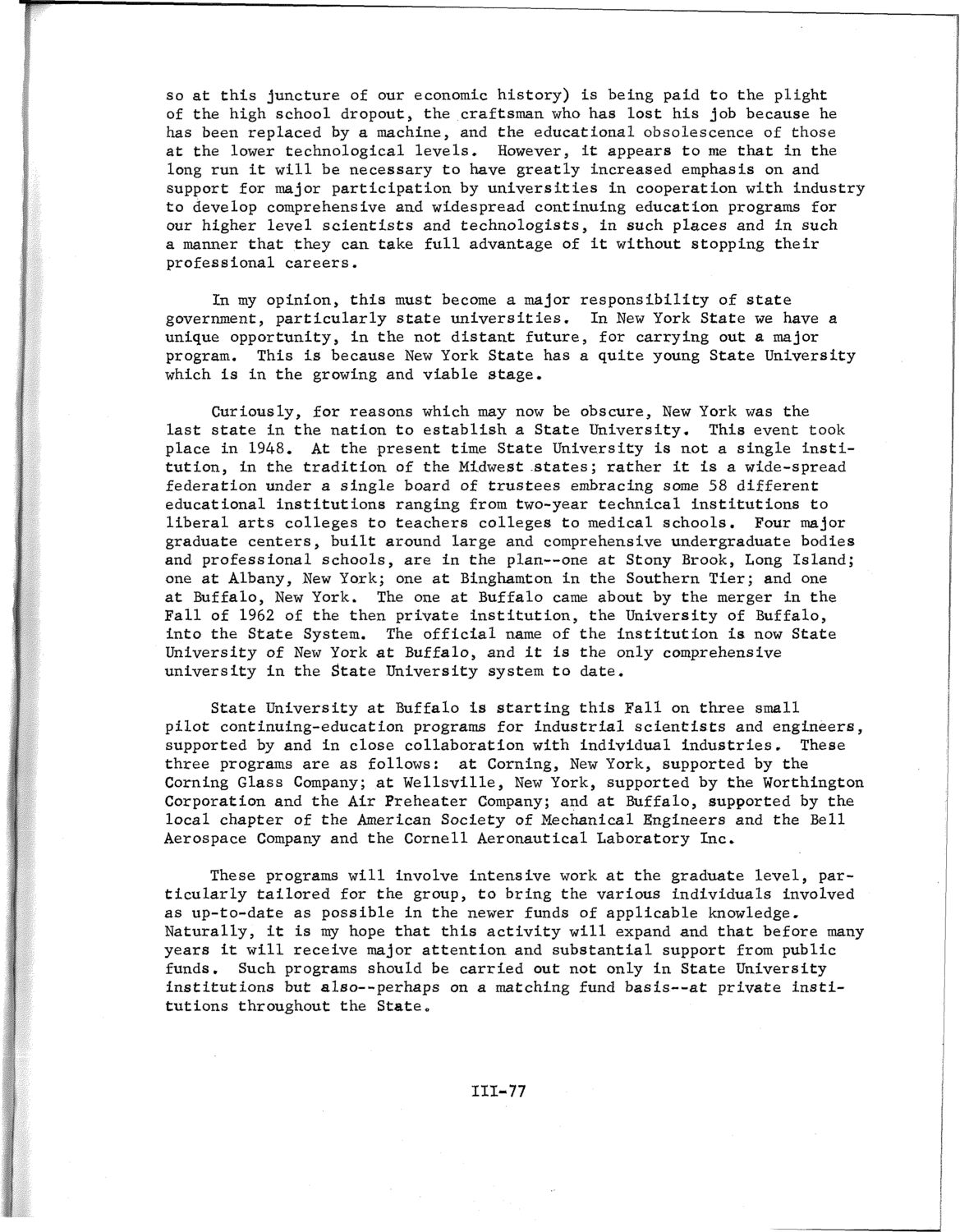| |
| |
Caption: SWE - Proceedings of the First International Conference of Women Engineers and Scientists
This is a reduced-resolution page image for fast online browsing.

EXTRACTED TEXT FROM PAGE:
so at this juncture of our economic history) is being paid to the plight of the high school dropout, the craftsman who has lost his job because he has been replaced by a machine, and the educational obsolescence of those at the lower technological levels. However, it appears to me that in the long run it will be necessary to have greatly increased emphasis on and support for major participation by universities in cooperation with industry to develop comprehensive and widespread continuing education programs for our higher level scientists and technologists, in such places and in such a manner that they can take full advantage of it without stopping their professional careers. In my opinion, this must become a major responsibility of state government, particularly state universities. In New York State we have a unique opportunity, in the not distant future, for carrying out a major program. This is because New York State has a quite young State University which is in the growing and viable stage. Curiously, for reasons which may now be obscure, New York was the last state in the nation to establish a State University. This event took place in 1948. At the present time State University is not a single institution, in the tradition of the Midwest states; rather it is a wide-spread federation under a single board of trustees embracing some 58 different educational institutions ranging from two-year technical institutions to liberal arts colleges to teachers colleges to medical schools. Four major graduate centers, built around large and comprehensive undergraduate bodies and professional schools, are in the plan—one at Stony Brook, Long Island; one at Albany, New York; one at Binghamton in the Southern Tier; and one at Buffalo, New York. The one at Buffalo came about by the merger in the Fall of 1962 of the then private institution, the University of Buffalo, into the State System. The official name of the institution is now State University of New York at Buffalo, and it is the only comprehensive university in the State University system to date. State University at Buffalo is starting this Fall on three small pilot continuing-education programs for industrial scientists and engineers, supported by and In close collaboration with individual industries. These three programs are as follows: at Coming, New York, supported by the Corning Glass Company; at Wellsville, New York, supported by the Worthington Corporation and the Air Preheater Company; and at Buffalo, supported by the local chapter of the American Society of Mechanical Engineers and the Bell Aerospace Company and the Cornell Aeronautical Laboratory Inc. These programs will Involve intensive work at the graduate level, particularly tailored for the group, to bring the various individuals involved as up-to-date as possible in the newer funds of applicable knowledge. Naturally, it is my hope that this activity will expand and that before many years it will receive major attention and substantial support from public funds. Such programs should be carried out not only in State University institutions but also—perhaps on a matching fund basis—at private institutions throughout the State. Ill-77
| |